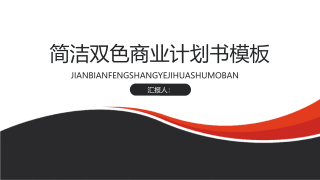城市碳排放量的影响因素研究——基于IPCC测算方法下的实证分析
VIP免费
浙江财经学院硕士学位论文
I
摘 要
在全球气候变暖的背景下,世界各国正积极致力于低碳经济的发展。据国际能
源机构(IEA)估计,城市将在 2030 年消耗全球总能耗的 3/4。把握城市这一碳排
放主体,如何发展低碳城市正成为新的研究热点。在“十二五”期间,我国面临
巨大的节能减排压力,研究城市碳排放对我国来说更具现实意义。
在理论上,本文剖析了城市碳排放的可能影响路径。首先,经济增长与城市碳
排放呈倒“U”型分布,环境库兹涅茨曲线从经济增长的规模效应、技术效应和结
构效应等角度解释了这种现象。脱钩理论从经济发展的不同阶段同样印证了这种
倒“U”型关系;工业部门是我国最大的碳排放部门,生产技术落后、产品结构不
合理等现阶段我国工业存在的一些问题使产业结构对城市碳排放存在影响。城市
的建筑、交通部门是仅次于工业部门的碳排放部门,空间结构通过对建筑、交通
布局的体现对城市的碳排放造成影响。
在实证上,本文首先介绍了三种较常见的碳排放估算模型,分别为碳排放的简
易模型、基于 IPCC 方法的估算模型及 Kaya 碳排放分解模型,比较分析了它们的
适用范围及不足之处,指出基于 IPCC 方法测算的结果更为精确;测算了不同模型
下的城市碳排放量,发现基于 IPCC 方法测算的数据普遍低于基于 Kaya 分解模型
测算的数据,指出产业结构、技术水平等原因是造成模型间存在估算差异的原因。
在理论分析的基础上,本文采用空间集聚程度、居民生活水平、产业结构特征、
交通便利程度四个因素作为解释变量,同时引入变量的二次项,碳排放量采用 IPCC
方法测算,利用 2003 年-2010 年我国 35 个省级以上城市的面板数据,进行固定效
应模型的回归估计。并将城市划分为东部及中西部城市进行比较分析。依据“狭
义城市”的概念,将城市划分为市辖区层面及全市层面进行比较分析。基于实证
检验,得出如下结论:
(1)市辖区人口密度与人均碳排放存在正“U”型分布,适当增加市辖区人
口,能充分利用市辖区现有的建筑用能及交通基础设施,在一定程度上发挥了城
市的减排潜力。但当人口进一步增加,交通拥堵等问题使城市运行效率下降,使
城市碳排放增加。由此,人口密度过高或过低都不利于城市低碳发展。
(2)第二产业比重与人均碳排放存在倒“U”型关系,即人均碳排放先是随
着第二产业比重上升而上升,到达一定阶段后,又随着第二产业比重上升而下降。
这说明,产业结构的升级使工业发展与能源消耗逐渐摆脱依存关系。降低碳排放
的关键是发展以技术密集型和资金密集型为特征的先进制造业,摆脱高污染、高
能耗、低产出的旧型工业化道路,产业升级在一定程度上促进了城市低碳发展。
浙江财经学院硕士学位论文
II
(3)东部城市和中西部城市人均GDP与人均碳排放的关系,均符合环境库兹涅
茨曲线的倒“U”型分布,东部城市的人均GDP水平普遍高于中西部城市的水平,
先于中西部城市达到环境改善的“拐点”。在假设“拐点”存在的前提下,一方面,
我们要继续刺激经济发展,在一定程度上促使“拐点”的尽快到来,为环境的改
善争取更多的时间;另一方面,要提倡居民生活的低碳化,保持高人均GDP下的城
市低碳运行。
(4)交通便利程度与人均碳排放呈现倒“U”型分布,且中西部城市交通便利
程度对人均碳排放的影响要大于东部城市。中西部城市交通基础设施完善程度不
如东部城市,私人交通工具的保有量较少,交通便利程度的提高更大程度上挖掘
了潜在的私家车消费量,由此增加了碳排放。因此,中西部城市如要降低交通部
门的碳排放量,须首先完善交通基础设施的建设,在私人交通工具出行增加的同
时,保证公共交通工具的出行比例。
依据实证结果,简要给出我国低碳城市建设的对策。例如重视城市的组团式布
局,保持适当的城市密度。加强环境管制的力度,促进居民生活的低碳化转变。
工业发展上,应注重产业结构与产品生产结构的调整。
关键词:城市;碳排放;影响因素;IPCC 方法
浙江财经学院硕士学位论文
III
ABSTRACT
Under the background of global warming, most countries are actively committed to
the development of low-carbon economy. According to the estimation of International
Energy Agency (IEA), city will consume 3/4 of the total energy around the world in
2030. How to develop low-carbon cities is becoming a new research hotspot. In the 12th
Five-Year Plan period, China is facing a huge pressure on energy saving and emission
reduction. To our country, studying carbon emissions has a more realistic significance.
In theory, this paper analyzes the possible influencing factors of city carbon
emissions. First, economic-growth and city-carbon-emissions is inverted "U" type
distribution. Environmental-Kuznets-Curve and theory of decoupling may explain this
phenomenon. Industrial department, as the largest carbon department has much
problems at present which make the industrial-structure one of influencing factors to
city carbon emissions. Construction and transport sector is second only to the industrial
sector in carbon department. Spatial structure has impacts on city's carbon emissions
through the reflection of layout of construction and traffic.
In empirical study, this paper introduces three kinds of common carbon emission
estimating model. They are, respectively, simple carbon-emissions model, the model
based on the method of IPCC estimation and Kaya carbon-emissions decomposition
model, then, this paper compares and analyzes their applicability and shortcomings,
points out that the IPCC method presents the results of more precise, which is generally
lower than the results based on the Kaya decomposition model with the difference of
industrial structure and technical level.
On the basis of theoretical analysis, this paper uses four factors, which are the
degree of spatial agglomeration、residents living level、industry structure and the degree
of traffic convenience ,as explanatory variables to carry out fixed model of regression
estimate, using the panel data of 35 cities (provincial level city) in our country from the
year 2003 to 2010 with the carbon emissions data based on the IPCC method. From the
empirical analysis, we can draw some conclusions as follows:
Degree of spatial agglomeration and carbon emissions per capita has a "U" type
distribution. Proper population increasing can make full use of the city’s present
building energy and transportation infrastructure, while when the population density is
浙江财经学院硕士学位论文
IV
too high, traffic jams and other problems will increase the carbon emissions. Thus,
population density should nor too high or too low.
Proportion of the second industry and carbon emissions per capita has an inverted
"U" relation. The key to reduce carbon emissions is developing advanced manufacturing
with the character of industry technology intensive and capital intensive, getting rid of
old type industrialization road. The upgrade of industry to a certain extent promotes
low-carbon-city development.
GDP per capita and carbon per capita emissions have an inverted "U" type
distribution, which accords with the Environmental Kuznets Curve. The eastern cities
reaches "inflection point " prior to the middle and western cities, for the level of GDP
per capita is generally higher than the level of middle and western cities .On one hand,
we should continue to stimulate economic development, promoting the " inflection
point " to come as soon as possible, on the other hand, we should promote low carbon
lifestyle.
The degree of traffic convenience and carbon emissions per capita have an inverted
"U" type distribution, and this relationship is stronger in middle and western cities than
that in eastern city. Compared to eastern cities, the traffic infrastructure in middle and
western cities is less complete and the quantity of private vehicle is less, so the
improvement of transportation convenient to some extend taps the potential private car
consumption and increases the carbon emissions. Therefore, middle and western cities
should first complete the construction of transport infrastructure and ensure public
transport travel scale before they attempt to reduce carbon emissions in transportation
department.
According to the empirical results, the low-carbon-city development can be carried
on from the spatial, social, industrial, technical path. For the spatial paths, attention
should be paid to the city forming a delegation type layout and mixed land use system;
For the social path, we should depend on the strengthening of environmental control
and low carbon lifestyle; For the industrial path, we should pay attention to industrial
structure and product structure adjustment; For the technical path, green construction
techniques and vehicles should be promoted.
Keywords: City; carbon emission; influence factors; IPCC method
浙江财经学院硕士学位论文
V
目录
第1章 绪论.....................................................................................................................1
1.1 研究背景及问题提出.....................................................................................1
1.2 选题的意义.....................................................................................................3
1.3 国内外研究现状.............................................................................................4
1.4 研究思路及内容.............................................................................................9
1.5 论文可能的创新点.......................................................................................10
第2章 城市碳排放影响因素的相关理论分析...........................................................11
2.1 居民收入对城市碳排放的影响...................................................................11
2.2 工业发展对城市碳排放的影响...................................................................16
2.3 空间结构对城市碳排放的影响...................................................................17
第3章 城市碳排放量估算与分析...............................................................................22
3.1 城市碳排放量的估算模型...........................................................................22
3.2.基于IPCC方法估算城市碳排放量的思路...................................................25
3.3 城市碳排放量估算结果及分析...................................................................28
第4章 城市碳排放影响因素回归分析.......................................................................35
4.1 城市碳排放影响路径模型构建...................................................................35
4.2 回归结果及分析...........................................................................................37
第5章 结论与对策.......................................................................................................43
5.1 主要结论与贡献............................................................................................43
5.2 相关建议与对策...........................................................................................44
5.3 研究展望.......................................................................................................46
参考文献.........................................................................................................................47
作者在读期间发表的学术论文及参加的科研项目.....................................................50
致谢.................................................................................................................................52
浙江财经学院硕士学位论文
1
第 1 章 绪论
1.1 研究背景及问题提出
1.1.1 研究背景
城市化推动的全球经济高速发展,对人类的自身发展是把“双刃剑”。人类在
享受物质资料极大富足的同时,也不得不面临资源耗竭、环境破坏的巨大压力。
气候变化是 21 世纪人类面临的最严峻挑战之一,全球变暖的问题若不加以有效控
制,将给人类社会带来毁灭性的后果。2007 年,IPCC(Intergovernmental Panel on
Climate Change,国际气候变化政府间组织,下同)出具的第四份评估报告(AR4)
预测,地球温度上升不超过 2℃是人类可以承受的极限水平,1906-2005 年,全球
平均气温升高了 0.74℃,这要求到 2050 年碳排放量减少到 1990 年水平的一半。
报告同时指出造成气候变暖的主要因素有 90%以上的可能性来源于人类活动,体现
在近百年来化石能源的消耗造成的以CO2为主的六种温室气体(GHG)的持续排放,
这已成为全球科学界的共识。
节能减排措施成为人类社会可持续发展的重要选择。随着更多的人开始关注
全球变暖问题,相关的国际会议也日趋频繁。1997 年日本京都联合国气候大会上
签订了《京都议定书》,2007 年巴厘岛气候大会上通过了“巴厘岛路线图”,2009
年哥本哈根会议上不同利益体相互攻击又寻求合作,最终签署非法律性文件,2011
年 11 月底的德班会议将气候保护的议题推向了一个高峰,各国围绕减排、资金、
技术和长期合作等议题展开积极磋商。在低碳这个全球性、时效性的议题面前,
不同国家间政治利益的抗衡正逐渐让位于统一的思想与行动,不论发达国家,还
是发展中国家都做出积极的响应。2003 年,英国首次提出“低碳经济”的概念,
并就其战略路线问题展开讨论,以英国为代表的欧盟极力倡导全球碳减排和低碳
经济,于 2005 年 1 月正式启动温室气体排放交易体系(EU ETS)。美国在 2003
年于芝加哥成立了气候交易所,早于欧盟的 ETS,并于 2007 年提出《低碳经济法
案》,体现了发展低碳经济的战略选择。日本在 2007 年 2 月的一份研究成果中首
次提出“低碳社会”的概念,并在此后发布一系列行动计划。
中国作为最大的发展中国家,节能减排的任务刻不容缓。据 Netherlands 环境
评估机构资料显示,2007 年中国已超越美国,成为全球二氧化碳排放总量和排放
增量最大的国家,其中排放总量已达全球排放总量的 24%。2002 年以来,我国碳
摘要:
展开>>
收起<<
浙江财经学院硕士学位论文I摘要在全球气候变暖的背景下,世界各国正积极致力于低碳经济的发展。据国际能源机构(IEA)估计,城市将在2030年消耗全球总能耗的3/4。把握城市这一碳排放主体,如何发展低碳城市正成为新的研究热点。在“十二五”期间,我国面临巨大的节能减排压力,研究城市碳排放对我国来说更具现实意义。在理论上,本文剖析了城市碳排放的可能影响路径。首先,经济增长与城市碳排放呈倒“U”型分布,环境库兹涅茨曲线从经济增长的规模效应、技术效应和结构效应等角度解释了这种现象。脱钩理论从经济发展的不同阶段同样印证了这种倒“U”型关系;工业部门是我国最大的碳排放部门,生产技术落后、产品结构不合理等现阶段...
相关推荐
-
建筑工程投标文件范本-(格式)VIP免费
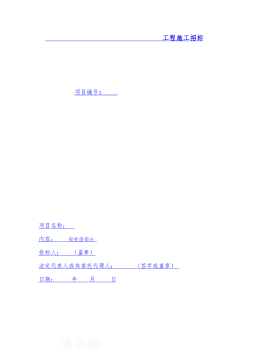
 2024-11-22 17
2024-11-22 17 -
幕墙工程施工组织设计方案VIP免费
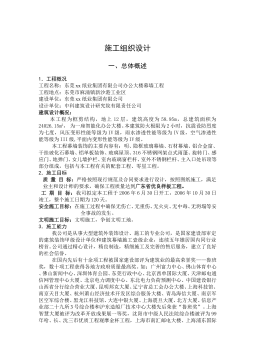
 2025-01-09 6
2025-01-09 6 -
建筑商品砼生产项目创业计划书VIP免费
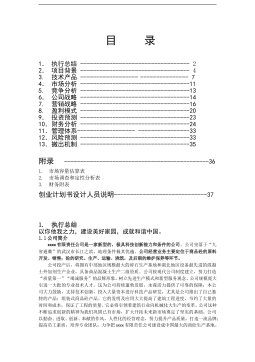
 2025-01-09 10
2025-01-09 10 -
建筑工程商业计划书模板VIP免费
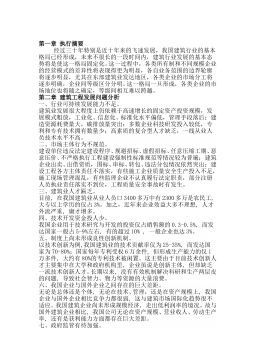
 2025-01-09 8
2025-01-09 8 -
工程项目施工计划书VIP免费
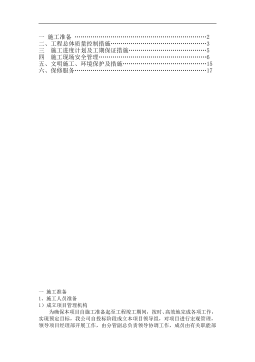
 2025-01-09 6
2025-01-09 6 -
《专业型文档》建筑企业计划书VIP免费
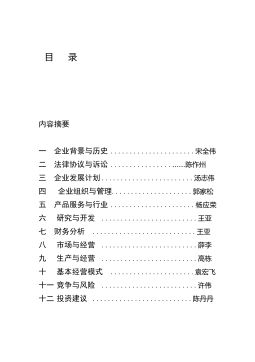
 2025-01-09 8
2025-01-09 8 -
xx水库灌区管道工程水工图纸C1VIP免费

 2025-01-09 13
2025-01-09 13 -
邮政区域仓储配送中心VIP免费
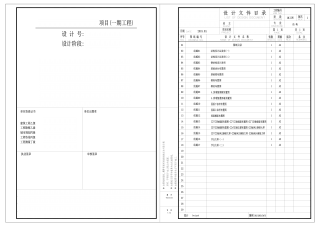
 2025-01-09 8
2025-01-09 8 -
疾病预防控制中心招标文件VIP免费
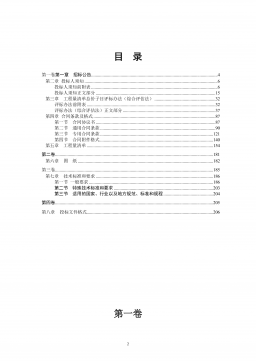
 2025-01-09 13
2025-01-09 13 -
体育健身中心施工招标文件VIP免费
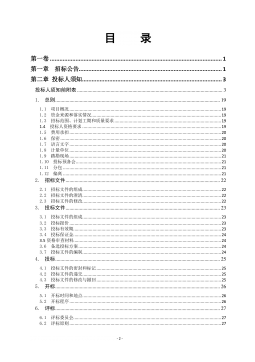
 2025-01-09 10
2025-01-09 10
作者:周伟光
分类:高等教育资料
价格:15积分
属性:55 页
大小:869.89KB
格式:PDF
时间:2024-09-29


